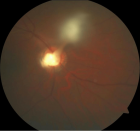Abstract
Case Report
Addiction to self-strangulation: a case-report
Aurely Ameller*, Yann Le Strat, Marion Cadranel, Celine Portalier and Caroline Dubertret
Published: 05 December, 2017 | Volume 1 - Issue 1 | Pages: 016-021
Introduction: DSM-5 mentions autoerotic asphyxia in the paraphilic disorders section, as a specifier for the diagnostic of sexual masochism disorder. Strangulation activities have also been observed in the “choking game”. The term “strangulation activity” is considered as more appropriate than “choking game”. While sharing a same behavior, autoerotic asphyxia and non auto-erotic strangulation activities might represent a very distinct pattern of disorders. We describe here a case report of a 25-year old male internship student who has practiced manual self-strangulation up to 40 times a day since adolescence. In the examination of this case we identify individual clinical aspects of this case in a process-based holistic case conceptualization.
Case description: The patient is a 25 years old male with a post-graduate degree who presented with a recent history of poor work performance and work-related stress during an internship. He has a concomitant history of both ketamine and cannabis use disorders, and reports urges to self-strangulate, sometimes specifically avoiding contact with friends engage in this behavior and that he has never attempted to discontinue self-strangulation. Neuropsychological assessment found a cognitive functioning below that expected given his educational level. Our intervention consists of a 3-weeks cognitive and motivational therapy program in addiction unit with associated abstinence.
Conclusion: Autoerotic asphyxia is a behavior observed not only in the context of sexual masochism disorder, but also as a specific addictive behavior, in the absence of sexual arousal, possibly as a result of emotional dysregulation.
Read Full Article HTML DOI: 10.29328/journal.jatr.1001003 Cite this Article Read Full Article PDF
Keywords:
Asphyxiophilia; Chocking game; Behavioral addiction; Self-strangulation
References
- Hucker SJ. Hypoxyphilia. Arch Sex Behav. 2011; 40: 1323-1326. Ref.: https://goo.gl/wCfpa9
- Krueger RB, Kaplan MS. Paraphilic Diagnoses in DSM-5. Isr J Psychiatry Relat Sci. 2012; 49: 248-254. Ref.: https://goo.gl/GyZkGz
- Hitchcock A, Start RD. Fatal traumatic asphyxia in a middle-aged man in association with entrapment associated hypoxyphilia. J Clin Forensic Med. 2005; 12: 320-325. Ref.: https://goo.gl/NrBCgz
- Quinn J, Twomey P. A case of auto-erotic asphyxia in a long-term psychiatric setting. Psychopathology. 1998; 31: 169-173. Ref.: https://goo.gl/4V8ZGu
- Shields LBE, Hunsaker DM, Hunsaker JCI. Autoerotic Asphyxia: Part I. J Forensic Med. 2005; 26: 45-52. Ref.: https://goo.gl/tUjrES
- Behrendt N, Buhl N, Seidl S. The lethal paraphiliac syndrome: accidental autoerotic deaths in four women and a review of the literature. Int J Legal Med. 2002; 116: 148-152. Ref.: https://goo.gl/xXNrkb
- Noirhomme-Renard F, Gosset C. The “choking game” and asphyxial games: epidemiological and clinical data. Rev Médicale Liège. 2011; 66: 485-490. Ref.: https://goo.gl/AM2M84
- 8 Mechling B, Ahern NR, McGuinness TM. The choking game: a risky behavior for youth. J Psychosoc Nurs Ment Health Serv. 2013; 51: 15-20. Ref.: https://goo.gl/q5Uxzb
- Katz KA, Toblin RL. Language matters: unintentional strangulation, strangulation activity, and the “choking game”. Arch Pediatr AdolescMed. 2009; 163: 93-94. Ref.: https://goo.gl/orYR7Q
- Macnab AJ, Deevska M, Gagnon F, Cannon WG, Andrew T. Asphyxial games or “the choking game”: a potentially fatal risk behavior. Inj Prev. 2009; 15: 45-49. Ref.: https://goo.gl/nqa2D7
- Ramowski SK, Nystrom RJ, Rosenberg KD, Gilchrist J, Chaumeton NR. Health risks of Oregon eighth-grade participants in the “choking game”: results from a population-based survey. Pediatrics. 2012; 129: 846-851. Ref.: https://goo.gl/kcez6Q
- Bernacki JM, Davies WH. Prevention of the Choking Game: parent perspectives. J Inj Violence Res. 2012; 4: 73-78. Ref.: https://goo.gl/Dtc6dM
- “Choking game” awareness and participation among 8th graders--Oregon, 2008. Centers for Disease Control and Prevention. 2010; 59: 1-5. Ref.: https://goo.gl/Lu8jzJ
- Andrew TA, Fallon KK. Asphyxial games in children and adolescents. Am J Forensic Med Pathol. 2007; 28: 303-307. Ref.: https://goo.gl/sdqgie
- Michel G, Bernadet S, Aubron V. Cazenave N. Des conduites à risques aux assuétudes comportementales: le trouble addictif au danger. Psychol Fr. 2010; 55: 341-353. Ref.: https://goo.gl/JsGTaf
- Bernheim A, Halfon O, Boutrel B. Controversies about the enhanced vulnerability of the adolescent brain to develop addiction. Front Pharmacol. 2013; 4: 118. Ref.: https://goo.gl/1Nrrj8
- Billieux J, Schimmenti A, Khazaal Y, Maurage P, Heeren A. Are we overpathologizing everyday life? A tenable blueprint for behavioral addiction research. J Behav Addict. 2015; 4: 119-123. Ref.: https://goo.gl/8irpJc
- Dudley R, Kuyken W, Padesky CA. Disorder specific and trans-diagnostic case conceptualization. Clin Psychol Rev. 2011; 31: 213-224. Ref.: https://goo.gl/UDHUzt
- Kardefelt-Winther D. Conceptualizing Internet use disorders: Addiction or coping process?. Psychiatry Clin Neurosci. 2016; 71: 459-466. Ref.: https://goo.gl/7GNFzo
- Modelli MES, Rodrigues MS, Castro BZM, Corrêa RS. Self-induced fatal air embolism: accidental autoerotic death or suicide?. J Forensic Sci. 2013; 58: 261-263. Ref.: https://goo.gl/dnMuyq
- Solarino B, Leonardi S, Grattagliano I, Tattoli L, Di Vella G. An unusual death of a masochist: Accident or suicide?. Forensic Sci Int. 2011; 204: 16-19. Ref.: https://goo.gl/Yo4fMk
- Hazelwood RR, Burgess AW, Groth AN. Death during dangerous autoerotic practice. Soc Sci Med. 1981; 15: 129-133. Ref.: https://goo.gl/bjLcYr
- Sauvageau A. Current reports on autoerotic deaths--five persistent myths. Curr Psychiatry Rep. 2014; 16: 430. Ref.: https://goo.gl/mJDg57
- Andrew T. Les jeux d’asphyxie chez les enfants et les jeunes. in Jeu du foulard et autres jeux d’évanouissement : pratiques, conséquences et prévention. Paris: L’Harmattan. 2010; 41-43.
- Zhu TH, Mio Nakamura, Benjamin F, Michael A, Jason R, et al. Obsessive-compulsive skin disorders: a novel classification based on degree of insight. J Dermatol Treat. 2017. Ref.: https://goo.gl/yXs4qU
- Billieux J, Philippot P, Schmid C, Maurage P, De Mol J, et al. Is Dysfunctional Use of the Mobile Phone a Behavioural Addiction? Confronting Symptom-Based Versus Process-Based Approaches. Clin Psychol Psychother. 2015; 22: 460-468. Ref.: https://goo.gl/B15GnP
Similar Articles
-
Addiction to self-strangulation: a case-reportAurely Ameller*,Yann Le Strat,Marion Cadranel,Celine Portalier, Caroline Dubertret. Addiction to self-strangulation: a case-report . . 2017 doi: 10.29328/journal.jatr.1001003; 1: 016-021
Recently Viewed
-
The evolving landscape of ENT disorder treatments: Recent advances and innovations (2019-2021) – A CommentaryYRKM Sai*. The evolving landscape of ENT disorder treatments: Recent advances and innovations (2019-2021) – A Commentary. Adv Treat ENT Disord. 2021: doi: 10.29328/journal.ated.1001012; 5: 001-004
-
The role of islamic lifestyle and healthy nutrition in accordance with the recommendations of islam and the holly quran by focusing on the risk of cancer incidentRoya Dolatkhah*,Pooneh Jabbaripour,Mohammad Hossein Somi,Ali Roshani. The role of islamic lifestyle and healthy nutrition in accordance with the recommendations of islam and the holly quran by focusing on the risk of cancer incident. J Community Med Health Solut. 2020: doi: 10.29328/journal.jcmhs.1001002; 1: 018-022
-
Myeloid Neoplasms: Better Understanding of their Molecular Pathogenesis with Improvised Genomic Testing: A Ray of Hope for Better Clinical OutcomesBhardwaj Tina Neelesh*, Phani MN. Myeloid Neoplasms: Better Understanding of their Molecular Pathogenesis with Improvised Genomic Testing: A Ray of Hope for Better Clinical Outcomes. J Hematol Clin Res. 2024: doi: 10.29328/journal.jhcr.1001027; 8: 001-007
-
Prevalence and Risk Factors to Preterm Labor through a Study in Jiblah University Hospital, Ibb, Governorate, YemenAfaf Alsharif*,Zainab Said,Fatima Mokabes,Leena Ameen,Alya Alqadri,Thekra Musaed,Bushra Musaed,Ala’a Ahmed,Halaa Rigih. Prevalence and Risk Factors to Preterm Labor through a Study in Jiblah University Hospital, Ibb, Governorate, Yemen. J Community Med Health Solut. 2025: doi: 10.29328/journal.jcmhs.1001053; 6: 020-026
-
Evaluation of Biostimulants Based on Recovered Protein Hydrolysates from Animal By-products as Plant Growth EnhancersH Pérez-Aguilar*, M Lacruz-Asaro, F Arán-Ais. Evaluation of Biostimulants Based on Recovered Protein Hydrolysates from Animal By-products as Plant Growth Enhancers. J Plant Sci Phytopathol. 2023: doi: 10.29328/journal.jpsp.1001104; 7: 042-047
Most Viewed
-
Evaluation of Biostimulants Based on Recovered Protein Hydrolysates from Animal By-products as Plant Growth EnhancersH Pérez-Aguilar*, M Lacruz-Asaro, F Arán-Ais. Evaluation of Biostimulants Based on Recovered Protein Hydrolysates from Animal By-products as Plant Growth Enhancers. J Plant Sci Phytopathol. 2023 doi: 10.29328/journal.jpsp.1001104; 7: 042-047
-
Sinonasal Myxoma Extending into the Orbit in a 4-Year Old: A Case PresentationJulian A Purrinos*, Ramzi Younis. Sinonasal Myxoma Extending into the Orbit in a 4-Year Old: A Case Presentation. Arch Case Rep. 2024 doi: 10.29328/journal.acr.1001099; 8: 075-077
-
Feasibility study of magnetic sensing for detecting single-neuron action potentialsDenis Tonini,Kai Wu,Renata Saha,Jian-Ping Wang*. Feasibility study of magnetic sensing for detecting single-neuron action potentials. Ann Biomed Sci Eng. 2022 doi: 10.29328/journal.abse.1001018; 6: 019-029
-
Pediatric Dysgerminoma: Unveiling a Rare Ovarian TumorFaten Limaiem*, Khalil Saffar, Ahmed Halouani. Pediatric Dysgerminoma: Unveiling a Rare Ovarian Tumor. Arch Case Rep. 2024 doi: 10.29328/journal.acr.1001087; 8: 010-013
-
Physical activity can change the physiological and psychological circumstances during COVID-19 pandemic: A narrative reviewKhashayar Maroufi*. Physical activity can change the physiological and psychological circumstances during COVID-19 pandemic: A narrative review. J Sports Med Ther. 2021 doi: 10.29328/journal.jsmt.1001051; 6: 001-007

HSPI: We're glad you're here. Please click "create a new Query" if you are a new visitor to our website and need further information from us.
If you are already a member of our network and need to keep track of any developments regarding a question you have already submitted, click "take me to my Query."














































































































































